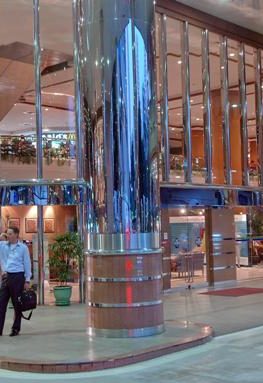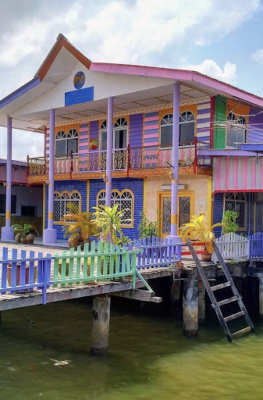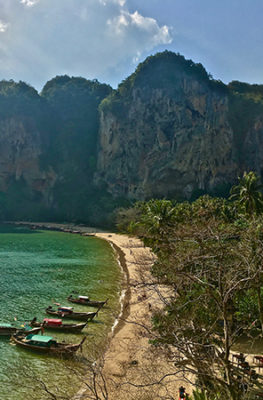Published on February 9, 2015
By far Cambodia’s claim to fame is the vast Hindu temple complex Angkor, a World Heritage site that attracts over 2 million foreign tourists alone, more than half of the country’s total. For over 5 centuries it was the capital of the Khmer empire that incorporated much of South-East Asia, exercising a lot of political and cultural influence on what’s nowadays known as ASEAN. It contains inter alia the impressive Angkor Wat, the temple that features on the national flag, and Angkor Thom with the famous Bayon Temple, full of large smiling Buddha statues.
This now is quite well-known and wouldn’t have been highlighted if it were not for the smart businessmen who, like in Myanmar (see last month’s article) opened up the site by an array of soft adventure opportunities. In fact, one could enjoy a jam-packed holiday centred in and around Angkor, filled with soft adventure.

Layout of Angkor Archaeological Park, with indications of circuits and roads
Source: http://www.canbypublications.com/angkor-cambodia/angkor-temple-guide.htm
Although traditional walking around at a leisurely pace for many still is the mode of preference, weather and distances between the various temples make cycling a perfectly acceptable transport alternative. Several circuits have been laid out, allowing to cover a much greater area in a shorter period of time than can be done on foot alone, including roads less travelled, for instance to the lesser visited West Gate of Angkor Thom city. Additionally, you can make an interesting side tour along the shores of Cambodia’s inner lake “Tonle Sap”, a short hop from Siem Reap.
Another exciting way to visit the ruins of the Archaeological Park is by Gondola. The Angkor Gondola is a traditional boating service, uniquely Khmer. Discovering the hidden treasures of the historical site, traveling the waters offers a totally new perspective, especially when undertaken upon sunset.

Traditional Angkor Gondola, converted into a four seat tourism boat; Source: www.pinterest.com
In the forests nearby Angkor (half an hour from Siem Reap) another thrilling, eco-adventure is awaiting, zip lining. A world class line offers the opportunity to get a glimpse of wild gibbons, living in the trees. It’s called “The Flight of the Gibbon” and apparently one of the longest zip-lines-tree-top canopy tours in Asia.

1,000 Lingas at Phnom Kulen National Park (Siem Reap province);
Source: http://www.lostmanproject.com/blog/asia/one-thousand-lingas-is-a-lot
Less than 50km from Siem Reap, Phnom Kulen National Park has ample possibilities for trekking through thick forest to explore, a grand reclining Buddha, waterfalls, an elephant pond, bat caves and a stretch of 2km riverbed with carvings of a thousand Lingas dedicated to the deity Shiva (a linga is a sacred Hindu phallic carving).
Finally, for the golfers amongst you, the conveniently located Angkor Golf Resort (a short 5 minutes ride from Siem Reap’s airport and town) provides a chance to work out your swing, figuratively speaking within the shadows of “Angkor Wat”, one of the 7 Wonders of the World.

Hiking to the World Heritage Site “Preah Vihear” on top of a mountain
Source: http://pattayatoday.com
Needless to say there are a lot more adventures to experience the daily life of Cambodia outside of the boundaries of Angkor and surrounds going beyond the main topic of this article.
Just to mention a few to whet your appetite, these include cruising down the Tonle Sap and the Mekong River on a cruise boat enabled to access the most remote of villages; hiking to the top of the mountain at which the country’s splendid 2nd World Heritage Site, the “Preah Vihear” temple, dedicated to Shiva, is situated (north Cambodia; Preah Vihear province) and bird watching at Kep National Park (Kep province, south Cambodia) in conjunction with swimming and fishing.
Kep, a seaside resort established by the French is less well-known than Sihanoukville, nonetheless a charming place to visit for its colonial architecture and laid-back atmosphere.
Last, but not least, the provinces along Laos’ and Vietnam’s borders, Stung Treng, Mondulkiri and Rattanakiri, offer ample possibilities for motor-biking to hill tribes, hidden to the public eye.

The beach at charming Kep, south Cambodia; Source: http://allpointseast.com






